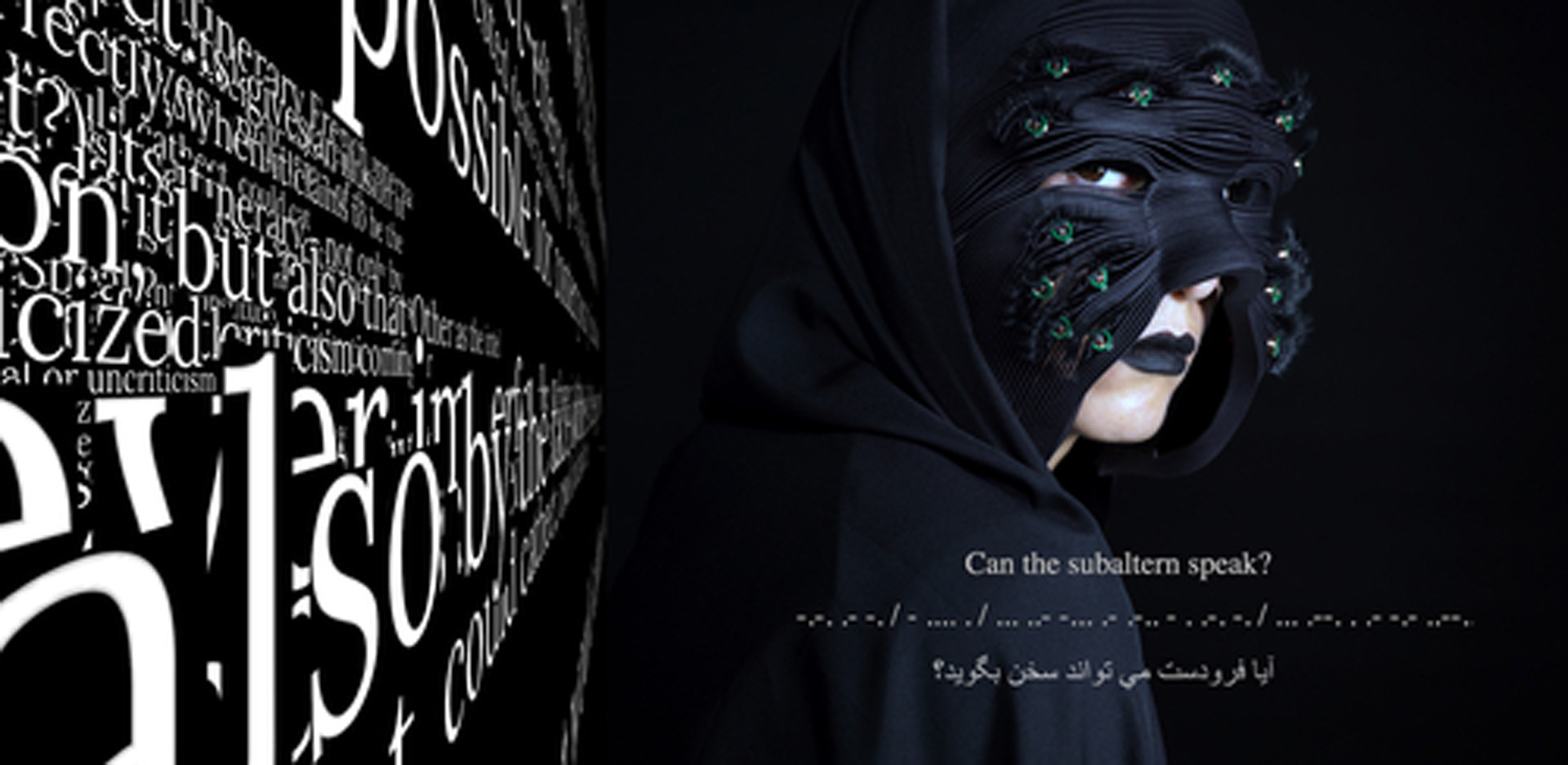“‘Can the Subaltern Speak?’: Feminism in Robotic Mask Design” by Farahi
Conference:
Type(s):
Title:
- 'Can the Subaltern Speak?': Feminism in Robotic Mask Design
Presenter(s)/Author(s):
Abstract:
This paper presents AI-controlled robotic masks intended to empower women and allow them to communicate with one another. These are inspired by the historical masks worn by the Bandari women from southern Iran. Legend has it that these masks were developed during Portuguese colonial rule as a way of protecting the wearer from the gaze of slave masters looking for attractive women. In this project two robotic masks seemingly begin to develop their own language to communicate with each other, blinking their eyelashes in rapid succession using AI-generated Morse code. This project draws upon a Facebook experiment where two AI bots apparently began to develop their own language. It also draws upon an incident when an American soldier used his eyes to blink and spell out the word “TORTURE” using Morse code during his captivity in Vietnam, as well as stories of women using code to report domestic abuse during the COVID-19 lockdown. The aim is to sow anxiety within the patriarchal system where the “wink” of the sexual predator is subverted into a language to protect women from the advances of a predator. The project bridges AI, interactive design, and critical thinking.
References:
1. Benjamin H. Bratton. 2019. Further Trace Effects of the Post-Anthropocene. In Liam Young (Ed.), Machine Landscapes: Architectures of the Post Anthropocene (1st ed.) Wiley.
2. Tom B. Brown, Benjamin Mann, Nick Ryder, Melanie Subbiah, Jared Kaplan, Prafulla Dhariwal, Arvind Neelakantan, Pranav Shyam, Girish Sastry, Amanda Askell, Sandhini Agarwal, Ariel Herbert-Voss, Gretchen Krueger, Tom Henighan, Rewon Child, Aditya Ramesh, Daniel M. Ziegler, Jeffrey Wu, Clemens Winter, Christopher Hesse, Mark Chen, Eric Sigler, Mateusz Litwin, Scott Gray, Benjamin Chess, Jack Clark, Christopher Berner, Sam McCandlish, Alec Radford, Ilya Sutskever, and Dario Amodei. 2020. Language models are few-shot learners. arXiv preprint. arXiv:2005.14165.
3. David Chalmers. 2020. GPT-3 and General Intelligence. In Philosophers On GPT-3 by Justin Weinberg. Retrieved from https://dailynous.com/2020/07/30/philosophers-gpt-3/
4. Andrew Griffin. 2017. Facebook’s Artificial Intelligence Robots Shut Down after They Start Talking to Each Other in Their Own Language. Independent (July 31, 2017). Retrieved from https://www.independent.co.uk/life-style/gadgets-and-tech/news/facebook-artificial-intelligence-ai-chatbot-new-language-research-openai-google-a7869706.html
5. Will Knight. 2016. AI’s Language Problem. MIT Technology Review (August 9, 2016). Retrieved from https://www.technologyreview.com/2016/08/09/158125/ais-language-problem/
6. Ivana Kottasová and Valentina Di Donato. 2020. Women Are Using Code Words at Pharmacies to Escape Domestic Violence during Lockdown. CNN (April 6, 2020). Retrieved from https://www.cnn.com/2020/04/02/europe/domestic-violence-coronavirus-lockdown-intl/index.html
7. Mike Lewis, Denis Yarats, Yann N. Dauphin, Devi Parikh, and Dhruv Batra. 2017. Deal or No Deal? End-to-End Learning for Negotiation Dialogues. arXiv:1706.05125. Retrieved from https://arxiv.org/pdf/1706.05125.pdf
8. Yun Li, Yongyao Jiang, Justin C. Goldstein, Lewis J. Mcgibbney, and Chaowei Yang. 2020. A Query Understanding Framework for Earth Data Discovery. Appl. Sci. 10, 3 (February 2020), 1127.
9. Jackson Ryan. 2021. Elon Musk’s Neuralink Reveals Monkey Playing Pong with Brain Implant. CNET (April 8, 2021). Retrieved from https://www.cnet.com/news/elon-musks-neuralink-reveals-monkey-playing-pong-with-brain-implant/?fbclid=IwAR1HSFL5bsds2SwhtcODstWNmctM03nvsdssbydOP1YZfl10KFSfE7Xr6nw
10. Gayatri Chakravorty Spivak. 1988. Can the Subaltern Speak? Basingstoke, Macmillan.
11. David Traum, Stacy C. Marsella, Jonathan Gratch, Jina Lee, and Arno Hartholt. 2008. Multi-party, multi-issue, multi-strategy negotiation for multi-modal virtual agents. In Proceedings of the 8th International Conference on Intelligent Virtual Agents (IVA ’08), September 1–3, 2008, Tokyo, Japan. Springer-Verlag, Berlin, Heidelberg, 117–130.
12. Deju Zhang and Xiaomin Zhang. 2009. Study on Forecasting the Stock Market Trend Based on Stochastic Analysis Method. International Journal of Business and Management 4, 6. DOI: 10.5539/ijbm.v4n6p163




